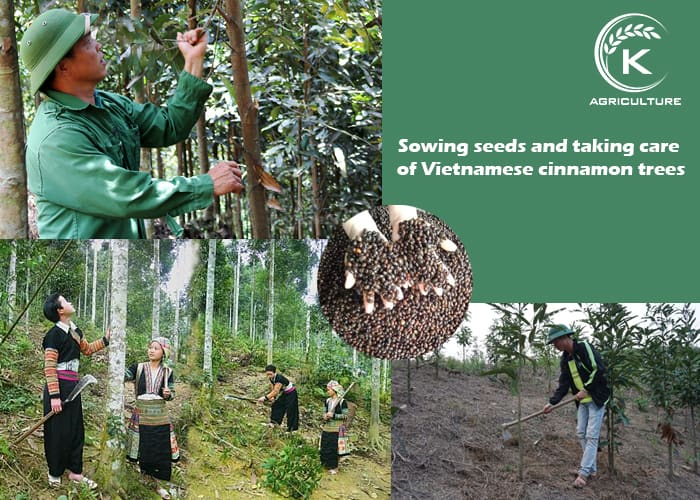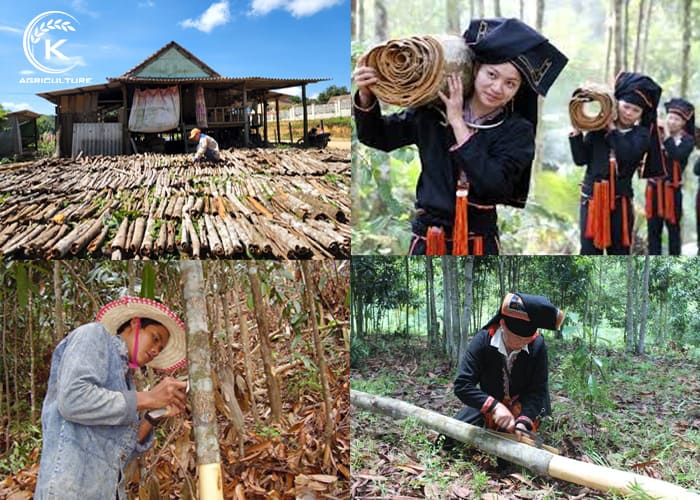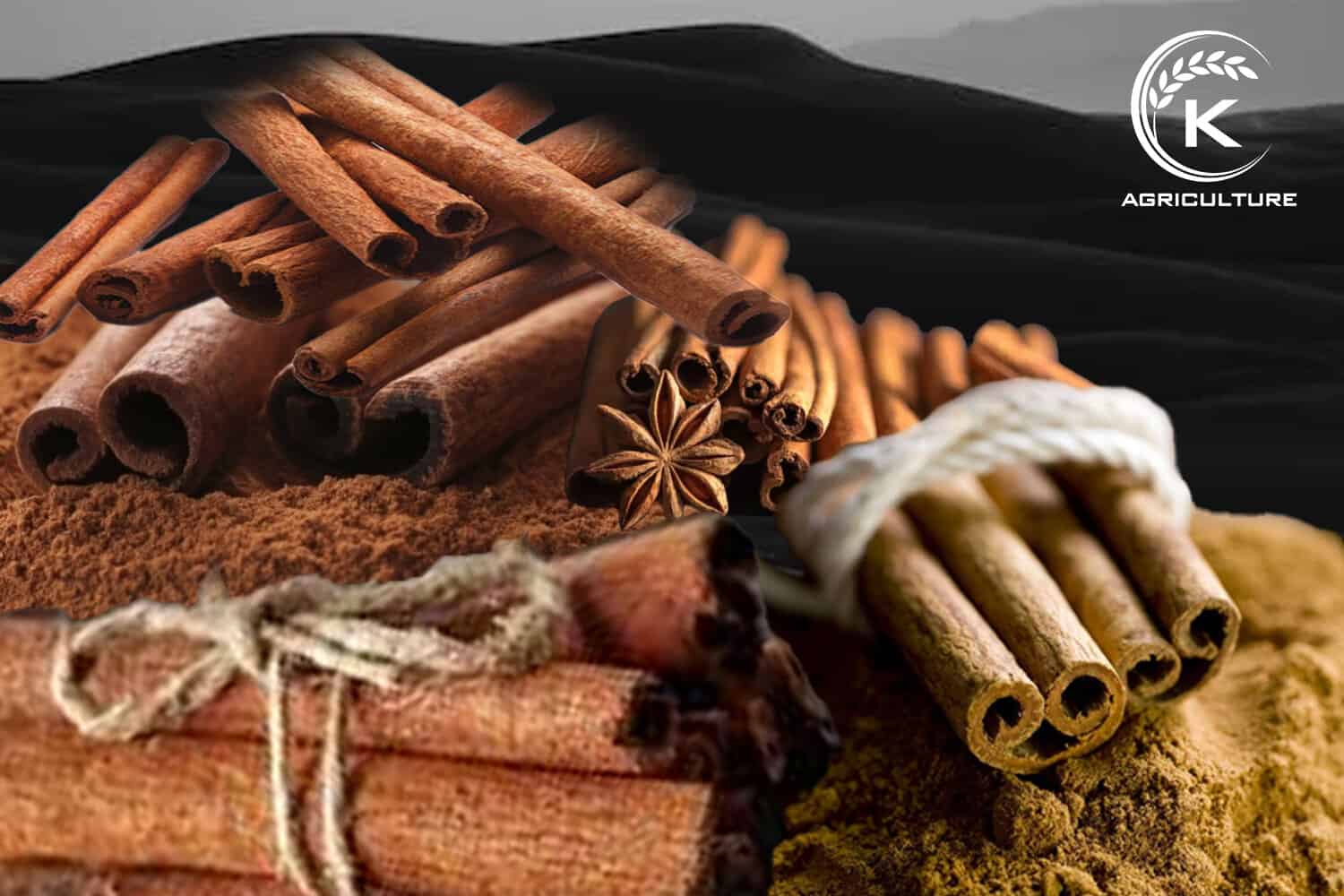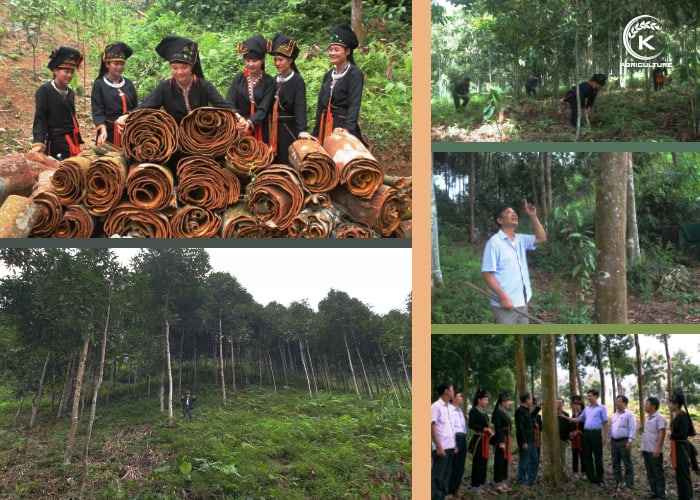How Vietnamese Cinnamon Sticks Are Made?
How Vietnamese cinnamon sticks are made? Many individuals and businesses want to know about the process of growing and producing Vietnamese cinnamon so that they can ensure the output quality of the product. This article will answer the above question in the most detailed and specific way.
How Vietnamese cinnamon sticks are made in 4 steps
The following section describes in detail the process of growing, harvesting and producing Vietnamese cinnamon production in Vietnam. In addition, some notes and experiences of farmers in the process of growing cinnamon will also be mentioned in this section.
The process of selecting Vietnamese cinnamon seeds
The stage of selecting Vietnamese cinnamon varieties is extremely important because it is directly related to the germination rate of the cinnamon tree as well as the health of the cinnamon tree during growth. Mother cinnamon trees about 15 years old or older that are healthy, grow well, are disease-free, have not been peeled, and cut branches will be selected to collect fruit to make seeds.

The most suitable time to pick Vietnamese cinnamon seeds is from January to March because that is the period when the cinnamon fruits are old enough and about to ripen. The reason the cinnamon seeds must be selected in this period is that this is the time the cinnamon seeds have the best quality. After harvesting, it is necessary to scrape the outer skin and remove impurities to obtain pure cinnamon seeds.
The process of choosing a suitable planting site for Vietnamese cinnamon trees
Vietnam cinnamon soil should especially avoid alluvial soil because it is not good for the growth of cinnamon trees. Therefore, Vietnamese cinnamon trees are often planted in places with loose, sandy, nutrient-rich soil to ensure the best growth for cinnamon trees.
The process of sowing seeds and taking care of Vietnamese cinnamon trees
During the planting process, the cinnamon tree is always guaranteed to have enough moisture in the soil. This factor is extremely important in the early days of sowing to create the most favourable conditions for cinnamon seeds to germinate, usually, about 15 days after sowing the seeds will germinate.

Next is the process of taking care of the cinnamon tree. When the cinnamon tree grows from 2 to 3 leaves, the farmer will dig the surrounding soil to create porosity for the soil. Also, clean the weeds around because otherwise, they will suck up all the nutrients for the cinnamon tree. The farmer also needs to make sure that the young cinnamon tree can’t be broken at this time. In case the plant is stunted and underdeveloped, the farmer will add nitrogen sulphate fertilizer to the tree to supplement nutrition.
If the cinnamon tree is attacked by pests, it will be uprooted and burned to protect other cinnamon trees around. Normally, after about 4 to 5 months, the tree will be about 10-12cm tall, depending on each cinnamon tree, the farmer will probably prune and transplant appropriately to keep the appropriate distance between the cinnamon trees.
The process of harvesting and processing Vietnamese cinnamon
March to August every year is the peak time to harvest cinnamon and produce the best quality of cinnamon. Because this is the summer period, it is suitable for drying cinnamon. Cinnamon after peeling will be dried naturally in the sun. Cinnamon after drying will be in the form of sticks and cut into small sticks, the length of the Cassia cinnamon stick will depend on each supplier.

Overview of Vietnam cinnamon market
The following section details the cinnamon market in Vietnam. The information below includes the characteristics of Vietnam cinnamon, the export market of Vietnam cinnamon, the cinnamon growing area in Vietnam and the annual output of cinnamon.
Characteristics of Vietnamese cinnamon
Vietnamese cinnamon is a perennial woody plant and is considered a speciality of Yen Bai province. Vietnamese cinnamon has a warm, slightly spicy taste and a pleasant aroma. Vietnamese cinnamon is not only a common and widely used spice but also has medical applications. Vietnamese cinnamon is grown the most in Yen Bai province because it has the most suitable geological and weather conditions, so Yen Bai cinnamon has a much higher quality.

Vietnam’s cinnamon market overview
Vietnamese cinnamon is a forestry tree but also a valuable export agricultural product. Currently, each year, Vietnam’s cinnamon export value reaches nearly 400 million USD. As mentioned above Vietnam’s cinnamon tree is ranked third in the world, and the export value and growing area continuously increase year by year. Because of its good quality and stable quantity, this item is favoured by many markets.

Vietnamese cinnamon is strongly consumed in many regions of South Asia (such as India, and Bangladesh), the Middle East (UAE, Pakistan), East Asia (Japan, Taiwan – China, Korea), the US and countries of the European Union – EU. Facing the trend of increasing demand for raw materials in the food, cosmetic and pharmaceutical industries and many free trade agreements signed, cinnamon products in Vietnam have more motivation and opportunities to develop.
According to the General Department of Forestry, the total area of cinnamon in the country is about 170,000 hectares. Which, cinnamon is grown mainly in provinces such as Lao Cai (53.3 thousand ha), Yen Bai (81 thousand ha) and Quang Nam (about 15 thousand ha). These three provinces account for about 70% of the total cinnamon area in the country. The annual reserve of cinnamon bark is estimated at 900 thousand – 1.2 million tons. The average yield of cinnamon is from 70 to 80 thousand tons per year.
Vietnam’s main cinnamon growing area
As mentioned above, Yen Bai province is currently one of the three largest cinnamon-growing regions in the country and is also the main source of cinnamon for export. Located in the north of Yen Bai province, Van Yen district has a natural area of over 139 thousand hectares, of which, forestry land accounts for 75%. Due to the high mountainous terrain and the suitable climate for cinnamon to grow, cinnamon cultivation in Van Yen has been established for a long time and is associated with the life of the Dao ethnic.

Vietnamese cinnamon trees are grown in 27/27 communes and towns of the Van Yen district. By the end of 2018, the total area of cinnamon in the Van Yen district is 40,019 hectares, of which the concentrated cinnamon area is 25,357 hectares. The total output of dried cinnamon bark is over 6,500 tons per year.
– The average production of cinnamon leaves is 65,500 tons per year.
– The output of cinnamon wood reaches 55,000 cubic meters per year.



